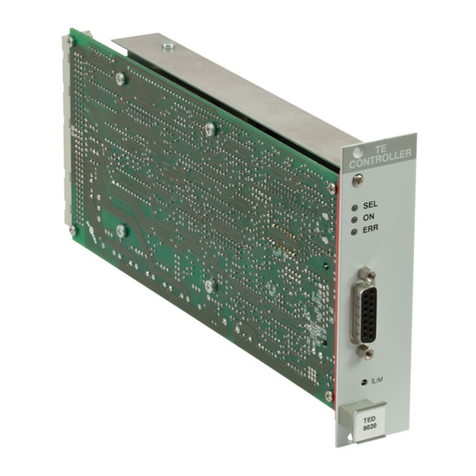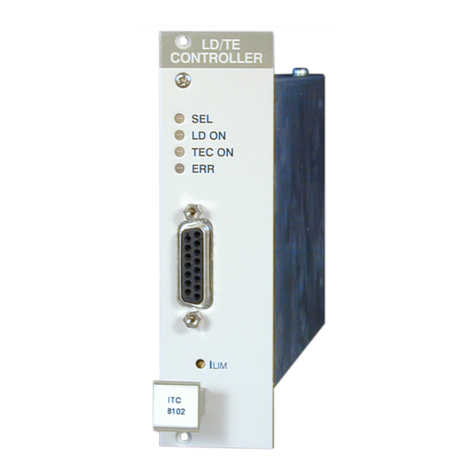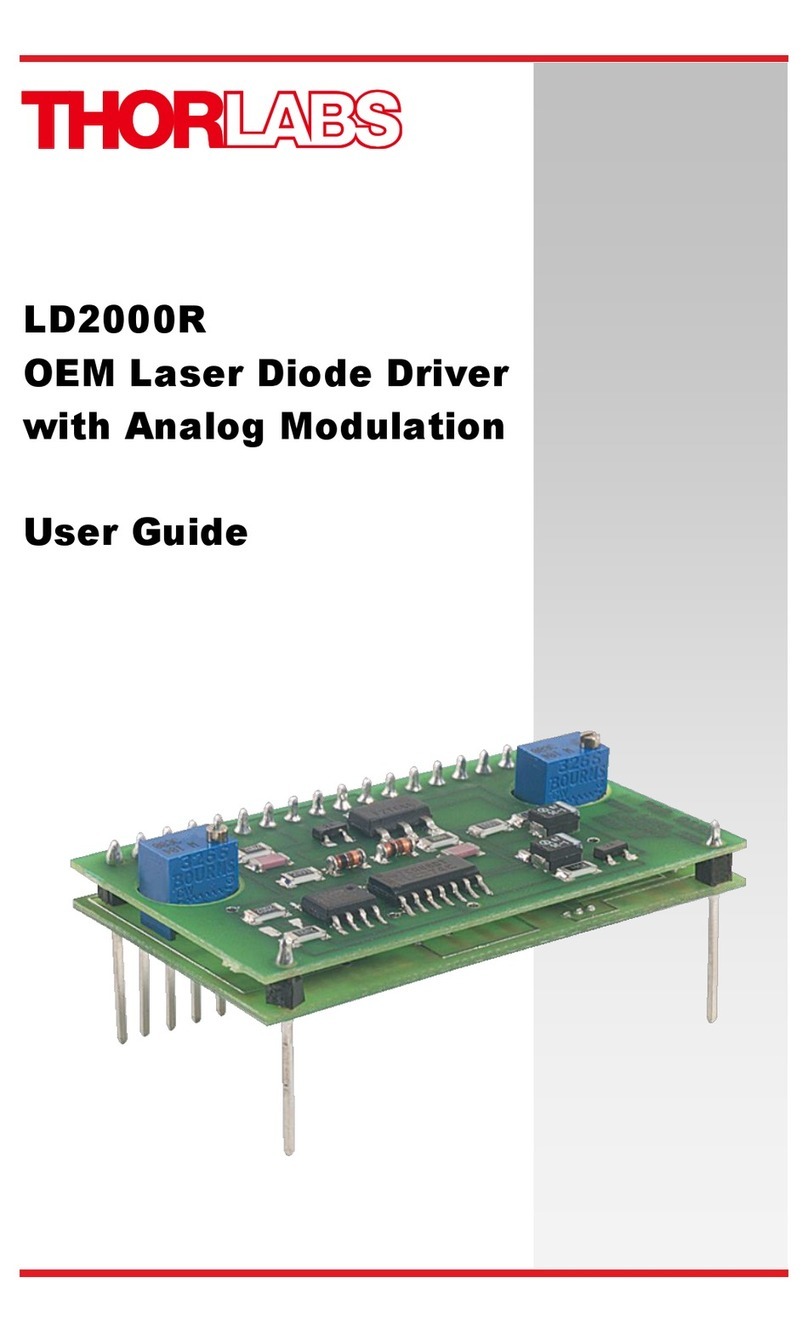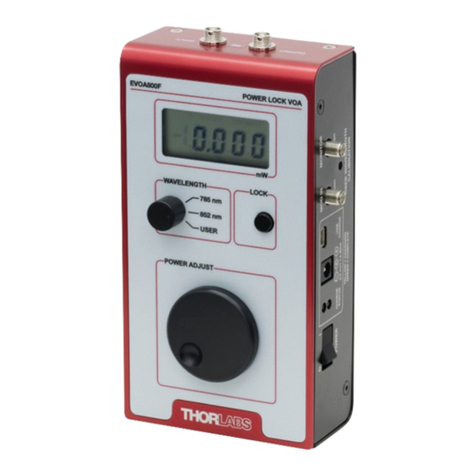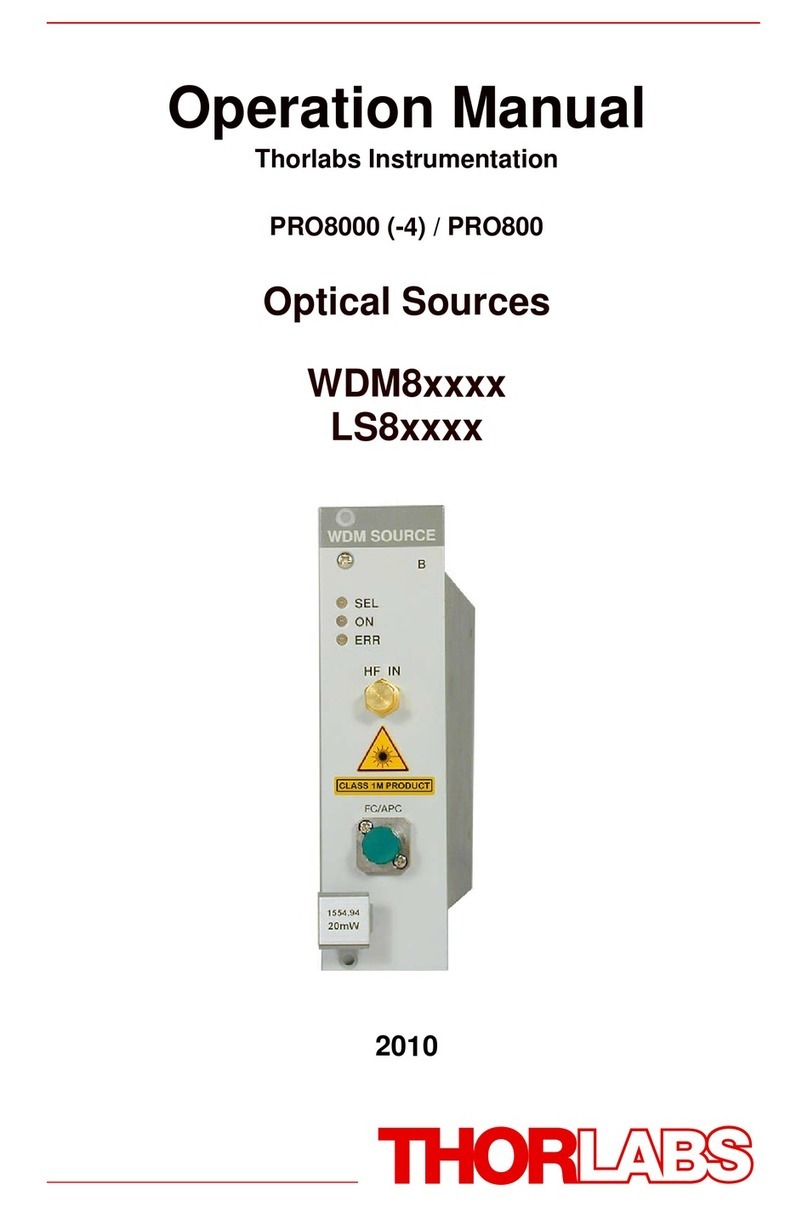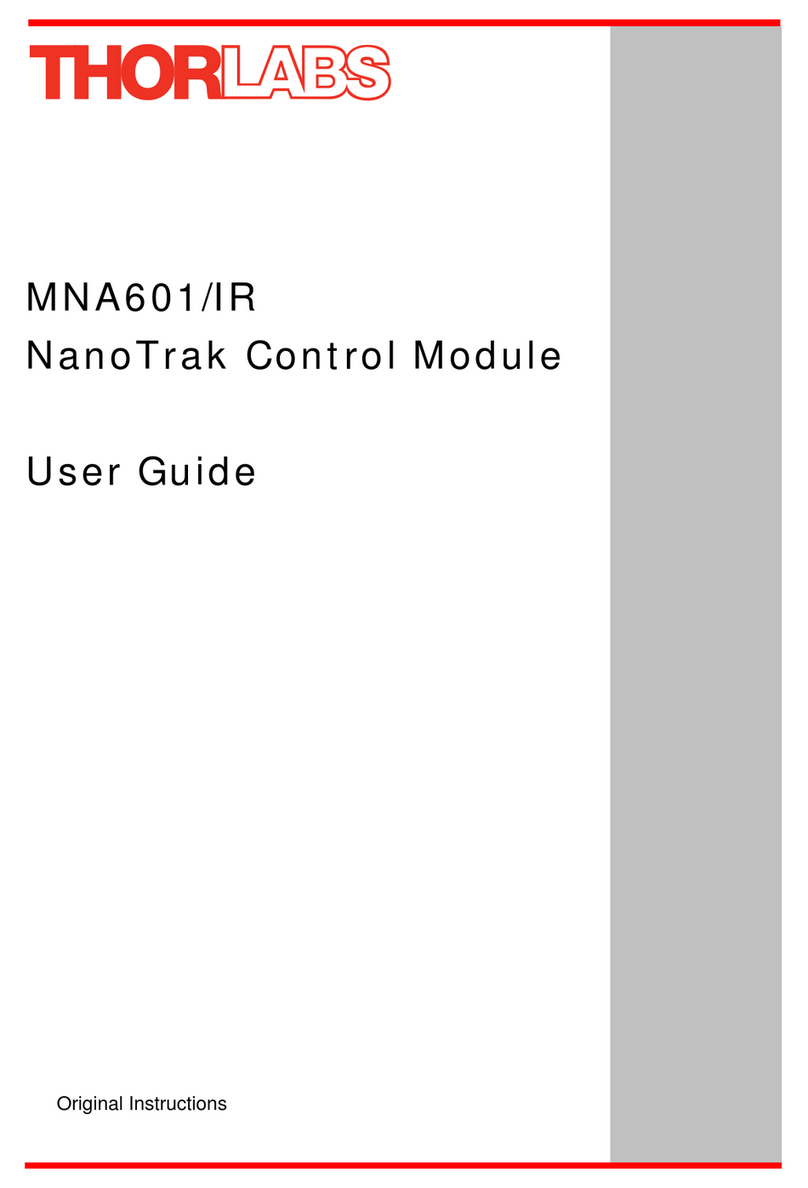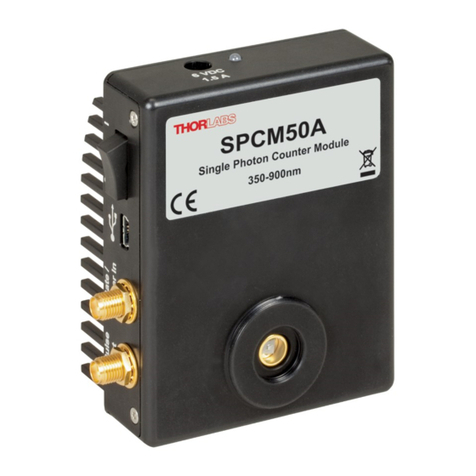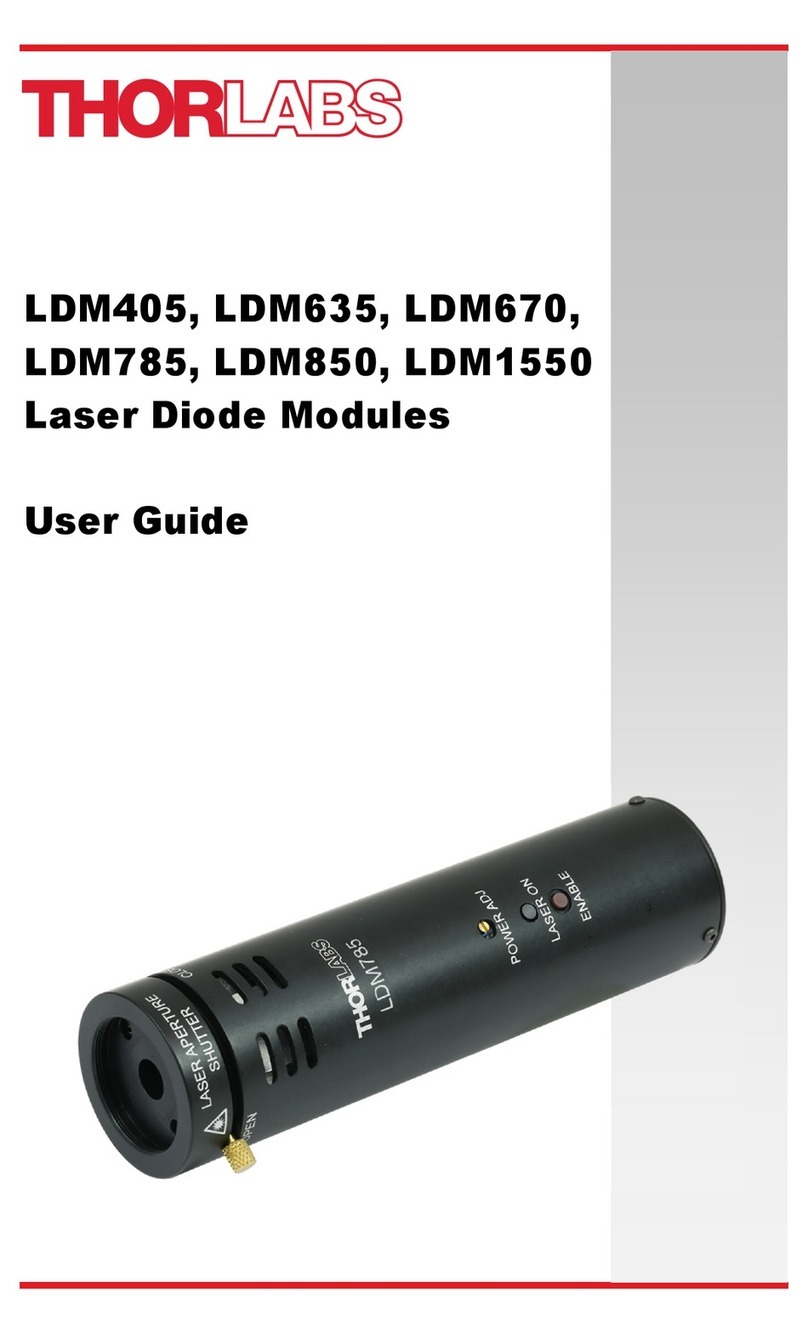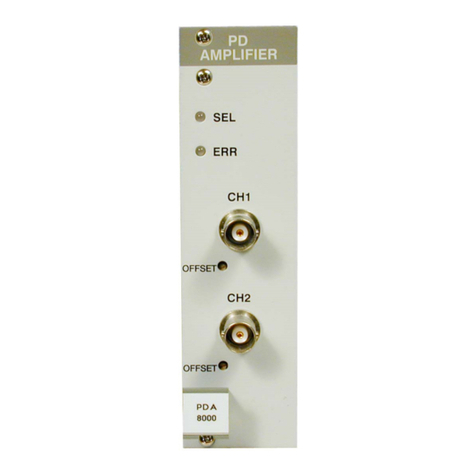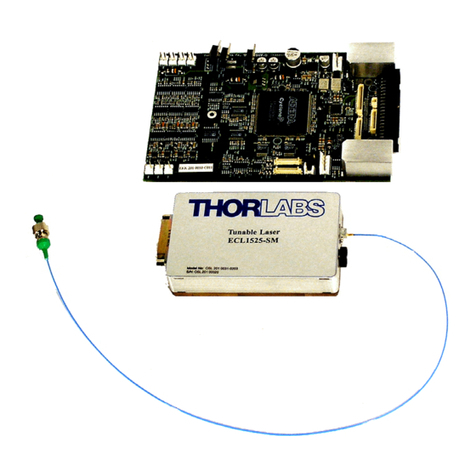1.2 Features
1.2 Features
•Mains filter
Protection against line transients and interferences.
•Line failure protection
In case of line failure/line damage the laser module is switched off and must
explicitly be switched on anew.
•Action check
After power up the laser modules are in LASER OFF mode.
•LabVIEW®- and LabWindows/CVI®-driver
For the TXP-series cards Thorlabs supplies LabVIEW®- and
LabWindows/CVI®-drivers for MS Windows 32.
Please refer to our homepage for the latest driver updates.
http://www.thorlabs.com
The laser fibers are connected via FC/APC connectors at the front of the module.
(Other connectors optional).
Each module is protected against overheating of the output stage by an automatic
shutdown. The LED "ERR" indicates that the module is switched off. After a decline
in temperature of about 10 °C the LED "ERR" extinguishes and the output can be
reactivated
The laser wavelength of the LS5000 module is adjusted by operating the laser diode
at a certain temperature. The wavelength is user adjustable.
The TXP contains a forced air cooling system with built-in fans. Depending on the
temperature the air flow of the fans is adapted automatically.
All settings can be changed via remote control from a PC.
LS5000 / page 5
